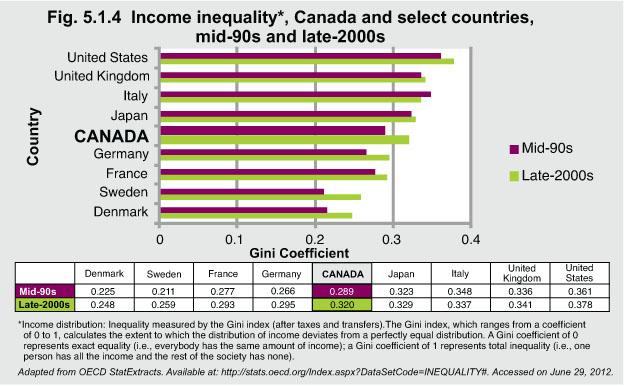Income inequality*, Canada and select countries, mid-90s and late-2000s

Between the mid-1990s and the late 2000s, the Gini coefficient for all G8 countries increased. This trend demonstrates a growing gap between the rich and the poor.
Implications
There are a number of factors that have caused income inequality to grow in Canada and its peer countries. Changes in the structure of the population—mainly the rise in the number of lone-parent households—is one factor that has driven the increase in income inequality.1
In Canada, 80% of all lone-parent homes are headed by women. “In 2010, almost 22% of children living in female headed lone-parent families experienced low income, whereas just fewer than 6% of children living in two parent families were in low income homes.”2
1OECD. (2008). “Growing Unequal? Income Distribution and Poverty in OECD Countries.” Available at: http://www.oecd.org/els/socialpoliciesanddata/41527936.pdf -accessed on June 29, 2012
2Mitchell P. (2012). Institute of Marriage and Family Canada. “Marriage and Poverty in Canada.” Available at: http://www.imfcanada.org/sites/default/files/ereview_September28_12_0.pdf -accessed on June 29, 2012.
